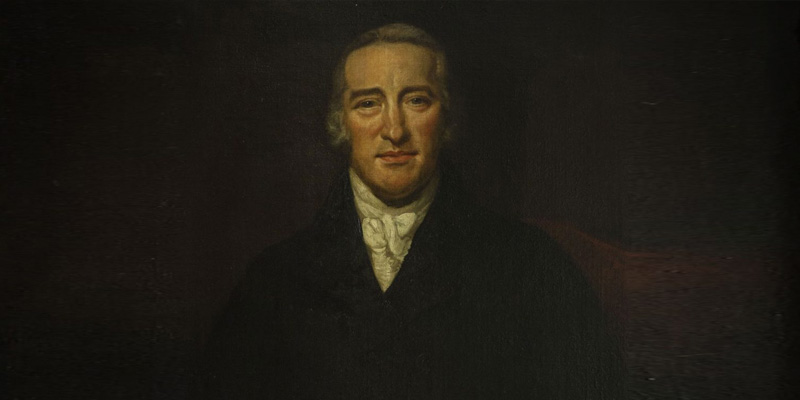Charles Simeon was the pastor of Holy Trinity Anglican Church in Cambridge from 1782 to his death in 1836 – a period of 54 years. It is difficult to find anyone before Charles Simeon who set about so systematically to teach people to preach.[1]
By 1832 Simeon had published what he called a ‘skeleton’ or sermon outline on the entire bible – over 2,500 in all! [2] They are quite detailed – a lot more flesh and blood than you might expect on a skeleton. But the skeletons were perhaps an outworking of his own experience as a preacher where for the first 7 years he said he ‘did not know the head from the tail of a sermon’.[3]
JI Packer says that the genius of the skeletons was that they showed the preacher how to make sure that it was the text that did the talking throughout the sermon, rather than the preacher loading up the text with his own ideas. They also encouraged the preacher to find and stick to the one big idea of the text. [4]
Exegesis:
The general rule of Simeon in preaching was to treat the texts in a ‘natural manner’.[5] To that extent he was concerned with what the bible said and not how any particular theological system hoped it would read. He objected to preachers using the text as a jumping off point to then speak about whatever hobby horse they were riding that day. Rather stay with the text – explain it and allow it to speak to the congregation.
Though himself a Calvinist he never let that get in the way of giving:
‘to every portion of the Word of God its full and proper force, without considering what scheme it favours, or whose system it is likely to advance. Of this [I] am sure, that there is not a decided Calvinist or Arminian in the world who equally approves of the whole of the Scripture … who, if he had been in the company of St Paul whilst he was writing his epistles, would not have recommended him to alter one or other of his expressions.
But [I] would not wish one of them altered …’ [6]
A preacher’s job was to find and preach the text’s ‘just meaning, its natural bearing and its legitimate use’.[7]
The test for Simeon of everything he preached or published was this:
- Does it humble the sinner,
- exalt the Saviour
- promote holiness. [8]
Delivery:
Simeon was aware of the need for proper preparation. Preaching was not to be taken lightly. He recorded in his diary 9th June 1796 that he preached to a large congregation only to find that the sermon went badly.
‘I thought that as I had preached twice on this subject with great liberty, I need not bestow any time in reflecting upon it. I thank my God for rebuking me, and hope to look more to him in future’[9]
A sermon ought to be unified in its design; perspicuous (clear) in its arrangement and simple in its diction.[10] So like Luther before him and Spurgeon afterward, Simeon preached profound truth with great simplicity:
‘Most of my sermons before the University have given satisfaction from their plainness, clearness and simplicity; for it is a mistake to suppose that men of science will not be pleased unless the sermon be abstruse or profound’ [11]
He believed sermons ought to be geared toward what the congregation can understand rather than what the preacher might know and that it ought not to be too long – weariness was the enemy of understanding. [12] He said that sermons are as long as they seem and if they are delivered in a dull or monotonous fashion they will seem long after only a few minutes!! [13]
Diction is important:
‘Bite your words’ was his command to preachers – don’t slur final syllables and your consonants.[14] He encouraged preachers to use their natural voice but avoid monotony at all costs.
‘Speak exactly as you would if you were conversing with an aged and pious superior. This will keep you from undue formality and from improper familiarity’ [15]
Interestingly he was not keen on preaching sermons from memory.[16] He thought that it created a lot more work for the preacher and ran the risk of appearing to be something like ‘reading a lesson’ i.e. delivery of something by rote rather than with meaning and conviction. His favoured means appears to have been short notes under principal headings, though in the early years he encouraged preachers to use full notes.[17]
Simeon preached in earnest. His conviction and passion was apparent to listeners when he preached. William Wilberforce commented on it, as did Simeon’s curate William Carus who wrote that:
‘the intense fervour of his feelings [Simeon] cared not to conceal or restrain; his whole soul was in his subject, and he acted and spoke exactly as he felt’. [18]
So Simeon encouraged preachers to speak from the heart with love. Even the most severe things could be said well if said in love.[19] However he was not someone to use the sermon as a place to scold or berate people. He encouraged preachers to be gentle when they preach and to preach the positive truths of the gospel in preference to condemning the errors of the society.
Simeon understood that a preacher cannot separate his/her preaching from their own walk with God.
‘But the whole state of your own soul before God must be the first point to be considered; for if you yourself are not in a truly spiritual frame of mind, and actually living upon the truths which you preach … to others, you will officiate to very little purpose’ [20]
Lord Macauley, in 1844, looking back upon Charles Simeon’s influence said:
‘As to Simeon, if you knew what his authority and influence were, and how they extended from Cambridge to the most remote corners of England, you would allow that his real sway was far greater than that of any primate’[21]
[1] Hopkins, H.E. Charles Simeon of Cambridge, London: IVF, 1948, 58
[2] Barclay, W. ‘Men and Affairs’ in The Expository Times 1977, 128. See also Memoirs, 83. Carus calls these skeletons ‘the work of his life’.
[3] Hopkins, 57
[4] J.I. Packer ‘Charles Simeon and Ourselves’ in Preach the Word, ed. L. Ryken & T. Wilson (USA: Crossway Books, 2007), p. 145
[5] Simeon & Carus, Memoirs of the Life of the Rev. Charles Simeon, ed. C.P. McIlvaine, New York: Robert Carter, 1847 84
[6] Preface to Simeon’s Horae Homileticae quoted in Moule, H. Charles Simeon, London:IVF, 1948, 79
[7] Hopkins, 57
[8] Memoirs, 108
[9] Memoirs, 69
[10] Memoirs, 84
[11] Hopkins, 59
[12] Packer, 146
[13] Packer, 146
[14] Moule, 70
[15] Moule, 70
[16] Memoirs, 85-86
[17] Hopkins, 88
[18] Moule, 72
[19] Hopkins, 65
[20] Moule, 70
[21] Vidler, Alec, The Church in an Age of Revolution, London: Penguin, 1974, p. 36


